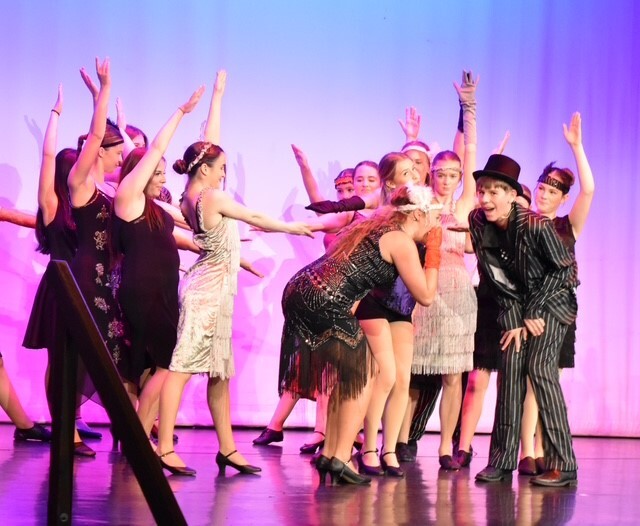
The 5 biggest challenges singing teachers face

BY: John Molloy
14 June 2018
Teaching singing can be one of the most joyful and rewarding career paths. Passing on your own love of singing, watching young people grow their confidence and seeing the technical progress they make are just some of the reasons teachers go into this field.
But, as a solo music teacher, you might find it difficult to find the time to do many of the things you feel you ought to. Introducing new learning techniques, swapping good practice with peers and experimenting with new music styles are just some of the areas highlighted by the dozens of singing teachers we recently surveyed.
Rest assured, singing teachers – you are not alone. Here are five of the biggest challenges faced by teachers (and my ideas to help combat them).
Challenge 1: Boosting confidence
Music is a confidence-boosting tool for children, especially teenagers. As Rebecca Laclair explains, ‘Self-esteem can be measured by how much we like ourselves. When a teen likes and respects her- or himself, he or she performs better and is happier in general.’
Think of your own students: how many of them show real confidence, especially at the start of their lessons with you? Private singing teacher, Abigail Mann, explains, ‘As the voice is a part of the individual, [self-doubt] can directly impact the quality of their sound, through their psychology as well as physical tension.’
Feeling self-conscious or unworthy, or the fear of doing something wrong can all act as barriers to learning and need to be overcome quickly, especially with the limited time most singing teachers spend with their students.
Quick Solution: At the start of each lesson, give your student an easy task. As Thomas Rogers published in his blog last year, ‘Sometimes setting tasks that are achievable for students is one great way of [building self-esteem]. The feeling of “getting something right” for a student, who rarely feels they do this, can be transformative in the short term.’
A learner won’t mind repeating something they’ve done before or they deem straightforward at the start of a lesson, as long as it settles nerves and progresses on to more challenging tasks later on.
Challenge 2: Building repertoire and musical identity
As singing teachers, it can often be down to you to inform the genres students become exposed to, particularly young learners. While they might have a natural gravitation towards musicals or jazz, it’s the responsibility of the teacher to broaden their musical horizons as much as possible to develop their musical identity.
The Rock & Pop syllabus is an excellent place to start; it bridges the gap between familiar genres and individual pieces that might be new and suitably challenging to learners. As Mark Graham Bennett from Plymouth College says, ‘There is a balance to be struck between serving the student now and serving the independent adult they will become.’
Students who have a sheer joy of singing, working towards vocal qualifications that will help them succeed in life, deserve to be introduced to a range of genres, encompassing lots of styles. Not only will their repertoire grow, but they can find the genres that best suit their vocal range and timbre, and identify areas for growth.
Quick solution: Create a ‘give and take’ environment. Ask students to think about a song they’d really like to learn – this teaches them accountability, as well as feeling empowered and invested in their own learning.
For every pop or rock song they choose, introduce them to a totally different genre or artist they haven’t heard of before. Aimée Harris from Broughton Hall Catholic High School tackles this by ‘gently introducing jazz and musicals songs they like until they trust my opinion on songs.’
Challenge 3: Honing technique
Many of our respondents felt that young people are picking up bad habits which are difficult to un-learn, especially by their teens. Breathing in unnatural places, belting out notes without the proper support, poor articulation and a lack of challenging their higher register are just a few of the common problems singing teachers highlighted in our survey.
Not only are these habits a barrier to developing technique, but they can be harmful to young vocal cords, too. These concerns have led to a scheme by the Royal Opera House to teach primary school children to sing healthily and combat ‘singing like they're trying to be on the X Factor: hardly using any notes and really sliding onto the note the whole time.’
Quick solution: To show the importance – and potential – of their upper range, Rhiannon Gayle from Harrogate Grammar School suggests warming up from the top down and doing exercises to release the larynx. Private singing teacher, Rachael Gill, puts breathing marks on a new song score straight away so that students always know what they are working towards.
Challenge 4: Developing sight-singing
While potentially tricky for all beginner musicians, sight-reading can present a real challenge for singers in particular. Not only does the learner need to be able to recognise the note on the page confidently, they need to be able to internalise the pitch of the note and ‘hear it’ before producing it vocally.
When you remove the security of already knowing what a song sounds like, some learners quickly lose confidence. As with anything, the earlier a student is introduced to the basics of sight-singing, the better. A small amount, fed into every lesson from the start, is a far better and less daunting activity than introducing it later on, purely for the purpose of an exam.
Students need trust and acceptance that getting things wrong is actually a key part of developing sight-singing. Model the skills for your students yourself; show fallibility before expecting them to do so. Sing them a piece and make some deliberate errors, getting them to follow the music and spot where you went “wrong”. By switching roles, learners are far more likely to embrace their own mistakes when they make them, and give sight-singing a good go in the first place.
Quick Solution: Break a song down into small, manageable sections. Try using clapping until learners recognise rhythms by sight. Slow everything down and get students to sing the rhythm on a single pitch until they feel comfortable with the pace.
Creating a code can also make sight-singing easier. Catherine Bowen of Hereford Cathedral School uses a mixture of approaches, such as numbers for the degrees of the scale, visual and aural recognition of intervals, and hand signs based on the Kodaly system. ‘I like the previous edition of Brewer & Harris’ Improve your sight-singing! as a slow-moving text.’
Challenge 5: Listening to latest research
Keeping up-to-date on the latest news in singing, as well as reminding yourself of pedagogical research, can be challenging. Our respondents were aware that continuing their own learning was important, but finding the time to dedicate to exploring new ideas and methods is difficult.
An easy way to continue your own training is to find relevant podcasts you can listen to on the go; whether you’re driving between teaching jobs or cooking dinner, putting a podcast on can be a way to hear about new ways of teaching. Additionally, articles from sites such as the Institute for Vocal Advancement and blogs from writers such as vocal coach, Gemma Milburn, will keep you up-to-date with changes in your field.
Quick Solution: The Naked Vocalist and The Full Voice are excellent podcasts, offering relevant, expert and entertaining solutions for busy singing teachers. For collaborative inter-personal training, Trinity College London runs events at a variety of locations throughout the year.
You can find loads more useful tips and advice from experienced singing teachers that we surveyed, in our new Teacher's Guide to Singing.
Related posts
BY: Tori Longdon


%20(1).jpg)


Comments & Replies